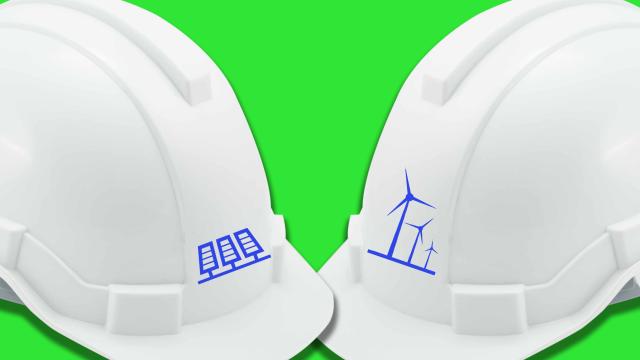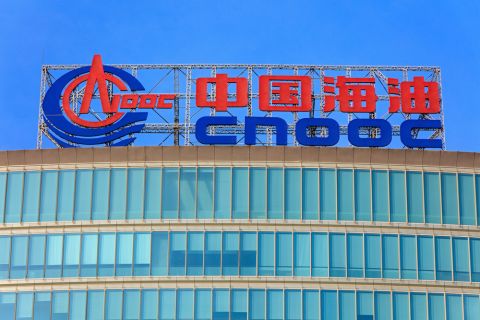
(Source: HartEnergy.com; ShutterOK, matius/Shutterstock.com)
With the fluctuation in annual wind and solar installations since the pandemic started in March, what is the outlook for growth in the renewable energy sector?
In the short term, the pandemic has caused a slowdown in the number of renewable energy projects being brought online. While not all projects have been affected equally, many projects that were under construction when the pandemic hit have experienced delays due to supply chain disruptions, lockdowns and social distancing measures, and will achieve commercial operation later than initially projected. And many projects that were scheduled to start construction during the pandemic or were in an earlier stage of development have seen their start of construction delayed and have had to overcome pandemic-related financing uncertainties.

The sentiment of many developers that I have spoken with is that the pandemic is simply causing delays in their projects, and that projects expected to come online in the next few years will still largely be constructed as market fundamentals remain intact. The step-down and expiration of tax credits over the next few years will serve to reinforce this development pipeline, with solar likely dominating as projects race to come online prior to 2024 to benefit from more robust tax credits and wind tapering off a bit as the tax credits are phased out.
Interestingly, even without taking into account new renewable installations, the pandemic-related decline in electricity demand has caused renewables to constitute a larger share of the overall generation mix. Due to the fact that they are near-zero marginal cost resources, wind and solar projects have continued to operate while resources with fuel costs and lower efficiency have seen their generation curtailed.
Over the long term, the outlook for renewables growth remains strong. While a variety of factors contribute to this expected growth, one key driver worth noting is demand driven by voluntary procurement of renewable energy by non-energy companies (as opposed to compliance-driven procurement).
Facing mounting pressure from customers and investors to decarbonize and demonstrate sustainable business practices, many businesses are setting aggressive renewable energy targets and increasingly sourcing their electricity from renewable sources in a way that promotes new development. Continued declines in the price of renewable energy has made such procurement a cost-competitive proposition and has enabled companies to sign up for the long-term purchase obligations (15 years or more) required to finance the construction of new renewable generation capacity.
While the technology sector giants have been the dominant corporate buyers of renewable energy, the number of corporate buyers across all sectors continues to grow. RE100, for example, a coalition bringing together the world’s leading influential businesses through commitments to procure 100% renewable energy, currently has over 260 members that represent leading companies from a broad range of sectors. Although the phasing out of renewable tax credits and low merchant power prices (which get lower as more renewables are added and the rate of demand growth slows) will provide some headwinds, continued cost declines coupled with state policies/mandates, ESG trends and strong corporate demand will continue to support growth. Of course, a change in federal policy driven by a new presidential administration or Congress could provide further support, but it is becoming increasingly apparent that the outlook for renewables is strong even without such changes.
Also bolstering the long-term outlook for renewable energy is the growth of battery storage installations. Battery storage will allow grid operators to better manage fluctuation in renewable energy output by storing energy produced during periods of high generation and discharging it when it is needed, and is seen as a key solution to effectively integrate high shares of solar and wind generation. With the cost of battery storage having drastically decreased over recent years, we are currently seeing a rapid expansion in investment in utility scale battery storage, both on a stand-alone basis and as an addition to new solar and wind development.
Dealing with Delays
How are developers addressing the delays and additional costs they are experiencing due to supply chain bottlenecks and force majeure notices from suppliers?
During the first few months of the pandemic, one of the biggest concerns voiced by renewable developers was the risk that pandemic-related delays would impact a project’s eligibility to receive federal tax credits.
Pre-COVID, in order to receive the maximum tax credits (i) a wind project had to be placed in service by the end of 2020 and (ii) a solar project had to have begun construction by the end of 2019 (which could be accomplished by incurring certain costs for equipment by the end of 2019 and taking delivery of such equipment within the first quarter of 2020).
The prospect of supply chain and construction delays placed projects at risk of missing the tax credit eligibility deadlines underpinning their financing arrangements. In May, however, the IRS issued new guidelines that gave developers some relief on both of those timelines—wind projects now have an additional year to be placed in service and solar projects that ordered and incurred costs for equipment in 2019 in order to begin construction can now receive that equipment well into 2020 without affecting tax credit eligibility. The extension of these deadlines has provided developers breathing room to absorb potential supply and construction delays and helped ensure that their projects qualify for the tax credits that they anticipated receiving before the pandemic hit.
Developers have been resilient in adapting their businesses to address COVID-related delays and impacts. As a result, developers that I have spoken with have measured most COVID-related delays in weeks and not months, and some delays have been completely avoided as parties continue to adapt their operations.
Most of the actual delays experienced by developers have been caused by supply chain disruptions and uncertainty regarding the ability to continue construction following the implementation of stay-home orders and social distancing guidelines. But like other businesses, developers and their contractors have worked to diversify their supply chains to provide greater resiliency and to adjust their protocols and management of physical work on site in order to promote the safety of workers. The various changes made by developers and contractors range from scheduling construction activities to allow for social distancing to modifying protocols to enable parties to conduct site visits and other inspections virtually where practicable.
Despite the resiliency and adaptation, however, the pandemic has forced developers to focus on force majeure provisions in all of their contracts, as force majeure and related impacts can have cascading effects and significant financial consequences to a project. There are a variety of developers still working through claims of force majeure, both as the affected party and as the recipient of the claim from its counterparties, and they are applying these experiences in current contract negotiations in order to account for future risks that may arise as the pandemic continues to evolve.
Financing Trends
What financing trends are you observing in the current environment? Is financing difficult to obtain right now for renewables?
The pandemic has caused the availability of tax equity financing, which typically accounts for a high percentage of the capital stack, to shrink. In a tax equity investment, a tax equity investor makes a capital contribution to a renewable energy project in return for tax credits generated by the project along with certain other benefits. Because of the downturn, however, many tax equity investors are not confident that their business operations will continue to support the same tax appetite, i.e., tax liability that it can offset with the credits generated by the renewable project.
While some tax equity investors have responded by simply being more conservative in the deals that they are willing to do, others have taken a step back to see the impacts of the pandemic. As a result, while the highest quality projects may not be experiencing material difficulty in arranging for financing, other projects are facing significant challenges that may result in such projects being placed on-hold until greater certainty is available.
In addition, because of the challenges associated with obtaining tax equity, we have seen smaller, less capitalized developers look for opportunities for consolidation or outside investors. Larger developers with strong relationships with tax equity investors are often in a better position than such smaller developers to obtain tax equity financing.
Big Oil’s Role
How important is Big Oil’s buy-in to the future of renewable energy development?
Renewables will continue to grow with or without the buy-in of Big Oil. But Big Oil, with its size, technical and commercial capabilities, existing gas and power trading capabilities, and offshore expertise, is well-positioned to accelerate renewable energy growth and participate in the energy transition.
Distilled to its basic form, the question faced by big oil companies is simple: to what degree should they maintain their focus on activities traditionally core to an oil and gas company as the energy markets transition versus gradually repositioning themselves as participants in new energy markets?
Big oil companies have generally referenced lower returns as a barrier to investing more heavily in renewable energy, with investments in renewable generation often offering 5-10% returns as opposed to the 15-20% returns to which they are accustomed. In addition, renewable generation tends to be supported by long-term commitments to purchase power, meaning that generators do not face market volatility (and potential upside) in the same way as the oil and gas industry.
It is true that renewable opportunities have historically yielded lower returns, but whether or not the returns to which the oil and gas majors are accustomed will continue to be available long term is a separate question. While a number of oil majors, particularly those with European roots, have begun to take a more vocal and proactive approach to participating in the advancement of renewable energy and the energy transition, their overall investment in renewable generation remains modest compared to their other activities and they continue to lag well behind other players. For example, a number of technology giants have more wind and solar generation capacity than some of the oil majors viewed as leading in the energy transition.
It is also worth recognizing that repositioning to participate in the energy transaction does not necessarily mean simply changing from oil and gas production to renewable power generation, but could encompass a myriad of other activities, including EV charging, battery storage, low-carbon hydrogen, carbon capture and storage, and other low carbon technologies.
In any event, it is clear that oil and gas companies will be impacted by the growth of the renewable energy industry regardless of whether they choose to participate.
Jessica Adkins, a partner at Sidley Austin LLP, focuses her practice on the power and renewable energy industry.
Recommended Reading
Orange Basin Serves Up More Light Oil
2024-03-15 - Galp’s Mopane-2X exploration well offshore Namibia found a significant column of hydrocarbons, and the operator is assessing commerciality of the discovery.
US Drillers Cut Oil, Gas Rigs for Second Time in Three Weeks
2024-02-16 - Baker Hughes said U.S. oil rigs fell two to 497 this week, while gas rigs were unchanged at 121.
Vår Energi Hits Oil with Ringhorne North
2024-04-17 - Vår Energi’s North Sea discovery de-risks drilling prospects in the area and could be tied back to Balder area infrastructure.
Tech Trends: Halliburton’s Carbon Capturing Cement Solution
2024-02-20 - Halliburton’s new CorrosaLock cement solution provides chemical resistance to CO2 and minimizes the impact of cyclic loading on the cement barrier.
CNOOC Finds Light Crude at Kaiping South Field
2024-03-07 - The deepwater Kaiping South Field in the South China Sea holds at least 100 MMtons of oil equivalent.




